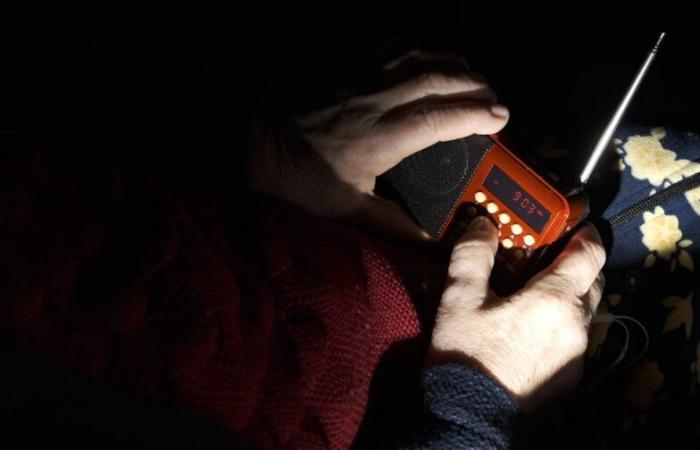Among the many prints that the blackout of April 28 left us in the Iberian Peninsula I stay with this: in a Madrid street, a group of passersby congregated around a car parked with the doors open, while the radio resonated in the strange silence of those hours. Eager for information, citizens approached as moths in light, seeking to understand what happened.
Neither television, nor social networks, nor intelligent devices worked. Only the radio – the analog, that of transistors with antenna and batteries – continued transmitting.
Order to uncertainty
The cut in the electricity supply that occurred at the peninsular level caused the fall of numerous mobile phone antennas, leaving a large part of the population without coverage or access to the Internet. From that moment, the information became the most precious good. The questions were piled up: what has happened? Does it affect my area only? How long will this darkness last?
These questions demanded answers to make fundamental decisions: how to return home, what to do with children, how to prepare an exam, if they stock up on water, food and toilet paper … and how to pay that extra purchase. For some, the questions were even more distressing, for example, how to keep the respirator of a sick child without electricity.
Fortunately, the blackout lasted just a few hours. However, the sedative role that the radio performed underlines the importance of including a transistor in that basic survival kit in the event of possible crises. It is not only an informative tool, but an instrument of emotional public health.
Always there
As in other crucial moments in history, the radio emerged as a balm against collective restlessness. In Spain, it was during the mythical “Transistors Night” of 23-F, when the country held its breath. He also fulfilled his role in 11-M, during the confinement by the pandemic or in the DANA of Valencia.
This unique radio capacity lies precisely in its extraordinary operational malleability: it can be deployed with minimal technical resources, transmitting from any corner with a laptop, and even improvise temporary studies in minutes.
Its energy independence is equally crucial, working with conventional batteries or portable generators, without necessarily depending on the general electricity grid. While other media depend on complex infrastructure – Rotatives, data networks, bulky equipment or stable connections – the radio maintains that agile and adaptable character that allows it to be present where and when it is needed the most.
All this versatility is also what makes it ideal in the coverage of war conflicts, when electrical networks can fail and telecommunications are not reliable.
The radio has once again demonstrated its value in that blackout that melted the leads to digital communication, exposing the emotional fragility of a society so given to overinformation. Uncertainty feeds the perception of threat and, given the informative vacuum, our brain projects umbrella scenarios as a defensive mechanism. This generates a cocktail of anxiety, fear, stress and feeling of loss of control, especially if the lack of information is prolonged.
From its dawn, the radio has proven to be an extraordinarily valuable medium to mitigate the psychological impact of social crises. Its universal accessibility and its ability to simultaneously transmit truthful information and emotional company make it a fundamental pillar to preserve collective mood balance.
Wikimedia Commons
It is so since its inception. In the thirties and forty, Franklin D. Roosevelt and Winston Churchill already took advantage of the therapeutic power of the newborn Radio. In those known as fireside chatsthe first was addressed to US citizens to tell them how the country of great depression was recovering, what the New Deal initiatives consisted of and how world War II evolved. Churchill, on the other hand, dedicated his radio speeches to communicate but also to harangue the British.
Their voices – serene and paternal one, firm and energetic the other – not only reported, but relieved collective anxiety, prevented panic and restored the emotional balance of populations traumatized by the crisis and war.
During the blackout
The technological characteristics of the radio make it unique in critical situations. And so, on the morning of April 28, while most digital informative channels and mobile telephony collapsed due to the lack of electricity supply, the main radio stations managed to maintain their service thanks to the activation of emergency generators and the expertise of their technical and journalistic teams.
Beyond informing, the radio offers an irreplaceable emotional accompaniment. The presence of human voices – calidas and full of nuances – transmits serenity and empathy, crucial elements to relieve stress. And thus radio listening can decrease feelings of isolation and promote social connection, essential aspects to build community resilience.
Although on the day of the blackout, the stations interrupted their usual programming to inform minute by minute of what was happening, in other types of setbacks – Pandemics, war conflicts – the radio routine, with informative bulletins, musical spaces and participatory sections, helps maintain a sensation of normality in the middle of the chaos. This represents a valuable psychological anchor during periods of uncertainty.
In a hyperconnected world where technological dependence makes us paradoxically more vulnerable, the transistor to batteries emerges as well as a sound bridge that keeps us connected when everything else fails. This veteran technology demonstrates that the simplest media can be the most reliable at critical moments, not only for their ability to transmit information, but because of their power to sustain our mental and emotional health when everyday certainties remain in the dark.






